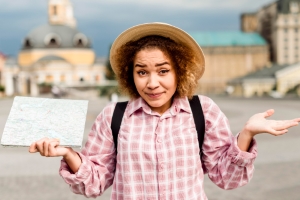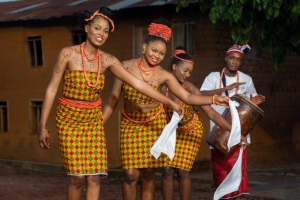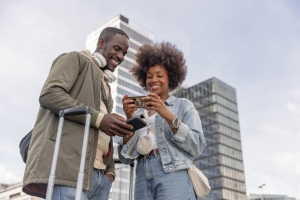Introduction
Namibia is a land of stunning landscapes, diverse wildlife, and rich cultural heritage. From the towering dunes of Sossusvlei to the vast Etosha National Park, Namibia offers an unforgettable travel experience. Whether you’re looking for adventure, luxury, or cultural immersion, this guide will help you prepare for what to expect.
Who Is This Guide For?
✅ First-time visitors – Understanding entry procedures, transportation, and accommodation.
✅ Adventure travelers – Insights into self-drive safaris, camping, and off-the-beaten-path experiences.
✅ Luxury tourists – Recommendations for high-end lodges, private game reserves, and premium experiences.
Arrival & First Impressions
Entry Process at Airports & Land Borders
✈️ Hosea Kutako International Airport (Windhoek) – The main entry point for international visitors.
🛂 Visa Requirements – Many nationalities can enter visa-free for up to 90 days. Others require a visa on arrival or pre-approved visas.
🧳 Customs Checks – Namibia is strict on biosecurity, so declare any food products upon arrival.
Language & Communication
- English – The official language, widely spoken in urban areas.
- Oshiwambo – The most widely spoken indigenous language.
- Afrikaans & German – Common in business and tourism sectors, especially in Swakopmund and Lüderitz.
👉 Tip: Learning a few basic Oshiwambo phrases can be a great way to connect with locals!
Accommodation Options
Namibia offers a range of accommodation choices to suit different travel styles and budgets:
🏕 Budget Stays:
- Backpacker hostels (popular in Windhoek & Swakopmund)
- Guesthouses with friendly local hosts
- Camping in national parks and along scenic routes
🏡 Mid-Range:
- Boutique hotels in cities and tourist hubs
- Safari lodges near Etosha & other wildlife reserves
- Self-catering lodges for families or groups
🏨 Luxury:
- High-end safari lodges & tented camps
- Private game reserves with exclusive guided tours
- Luxury beachfront resorts in Swakopmund
👉 Tip: Book well in advance, especially during peak season (June – September).
Transportation & Getting Around
🚗 Self-Driving:
- Highly recommended – Namibia has well-maintained roads and spectacular scenic drives.
- 4×4 vehicles are necessary for exploring remote desert areas (Skeleton Coast, Damaraland).
- Fuel stations are limited in rural areas—always carry extra fuel!
🚌 Public Transport:
- Intercity buses connect major towns, but schedules can be irregular.
- Minibuses & shared taxis are affordable but not always the safest or most reliable option.
✈️ Domestic Flights:
- Available between Windhoek, Swakopmund, Lüderitz, and Etosha for those short on time.
👉 Tip: If self-driving, carry a spare tire, extra water, and a first-aid kit—distances between towns can be long.
Food & Dining
Namibian cuisine is a blend of indigenous flavors, German influence, and South African-style barbecues.
🍖 Traditional Dishes:
- Biltong – Dried, cured meat (similar to jerky).
- Kapana – Grilled beef, often sold in markets with spicy sauces.
- Mahangu porridge – A staple food in rural areas, made from pearl millet.
🍽️ Street Food & Restaurants:
- Swakopmund & Windhoek have excellent street food markets and fine-dining restaurants.
- German bakeries are popular, serving fresh bread, cakes, and strong coffee.
- Seafood in Walvis Bay is a must-try, especially fresh oysters and fish.
👉 Tip: If you’re vegetarian or vegan, options may be limited in rural areas, so plan ahead!
Money & Costs
💰 Currency:
- Namibian Dollar (NAD) – Pegged 1:1 with the South African Rand (ZAR), and ZAR is also accepted.
💳 Payment Methods:
- Credit/debit cards are widely accepted in cities.
- Cash is essential for rural areas, small shops, and fuel stations.
💸 Expected Budget Per Day:
- Budget travelers: $50–$100 (hostels, local food, shared transport).
- Mid-range travelers: $150–$300 (lodges, car rentals, guided tours).
- Luxury travelers: $400+ (high-end lodges, private safaris, domestic flights).
👉 Tip: ATMs are available in cities, but it’s best to carry some cash when traveling to remote areas.
Safety & Travel Tips
✅ General Safety:
- Namibia is one of Africa’s safest travel destinations, but petty theft can occur in cities.
- Avoid walking alone at night in Windhoek and other urban areas.
🐘 Wildlife & Nature Safety:
- Keep a safe distance from animals in national parks—even elephants and lions!
- Do not exit your vehicle during game drives, except in designated areas.
🚰 Health Precautions:
- Tap water is generally safe in cities, but bottled water is recommended in rural areas.
- Malaria risk exists in northern Namibia—bring anti-malarial medication & repellent.
- Travel insurance is essential, especially if visiting remote regions.
🚨 Emergency Contacts:
- Tourist Police: +264 61 209 2405
- Medical Emergency: +264 61 203 2276
- Roadside Assistance (AA Namibia): +264 61 224 201
👉 Tip: Carry copies of your passport and emergency contacts in case of any issues.
Conclusion
Namibia is a dream destination for travelers seeking adventure, breathtaking landscapes, and unique cultural experiences. Whether you’re self-driving through the desert, indulging in luxury safaris, or exploring local markets, knowing what to expect will help you make the most of your trip.🌍
Ready to explore Namibia? Pack your bags, plan your route, and prepare for an unforgettable journey! ✈️🏜️🐘








